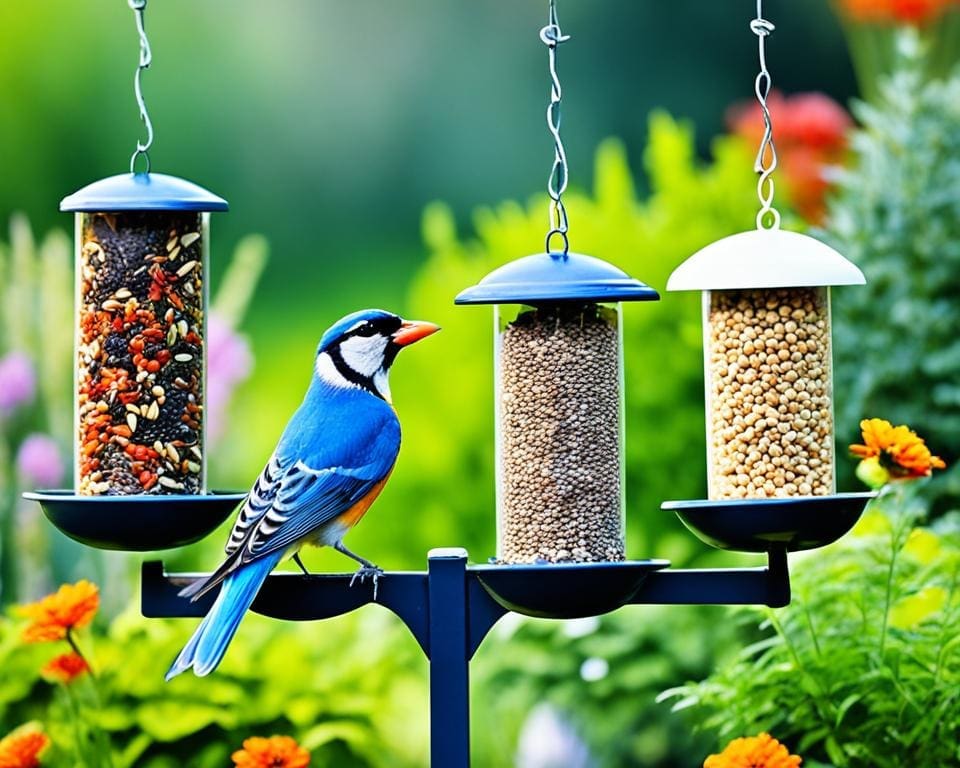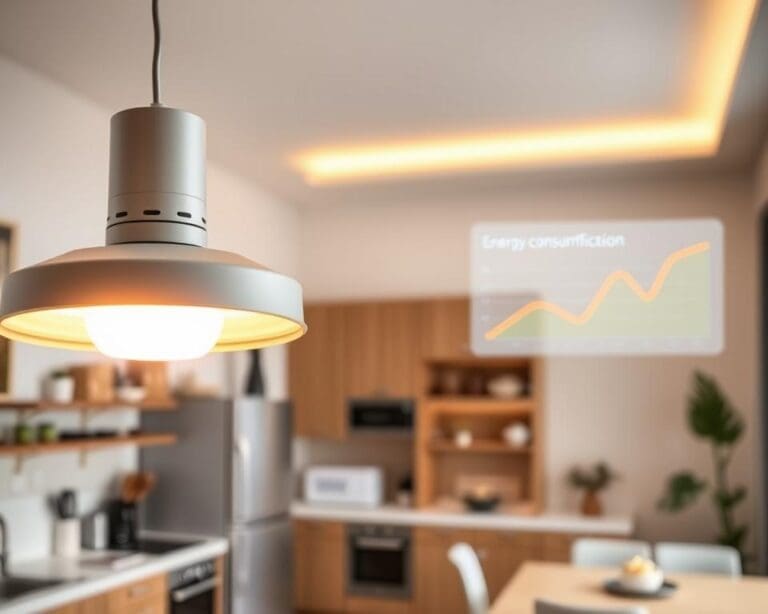Want to make your garden a welcoming place for feathered friends? Start by choosing the right bird feeders. Various birds prefer different feeders. Tube feeders are perfect for tiny birds like finches. In contrast, platform feeders allow larger birds to dine freely.
Knowing what each bird likes to eat is key to a lively garden. Robins and blue tits love suet balls. Sunflower hearts are adored by siskins and house sparrows. Offering diverse foods like niger seeds and mealworms attracts more birds. Quality bird feeding gear lets you enjoy watching these fascinating beings up close. With some planning and knowledge, your garden will turn into a vibrant retreat for birds.
Choosing the Right Bird Feeders for Your Garden
To invite various garden birds, it’s key to pick the right bird feeders. Choose ones that meet different birds’ diet needs. Your bird feeder should be durable, weather-resistant, easy to set up, and simple to clean.
Types of Feeders to Consider
There are several bird feeders that work well in gardens. These include:
- Seed Feeders: Great for small birds like blue tits and robins. One good choice is the Ring-Pull Click Metal Seed Feeder, which comes in different sizes.
- Suet Feeders: Best for birds that need lots of energy, like tits and starlings. A top pick is The Nuttery Hexihaus Fatball/Suet Cake Feeder, which has a 10-year warranty.
- Ground Feeders: Perfect for ground-feeding birds such as blackbirds, thrushes, and robins. It’s safer to put these near bushes.
Benefits of Fat Ball Feeders
Fat ball feeders are especially useful in winter. They give birds the extra energy they need. These suet feeders, with balls, blocks, or pellets, are important for winter and breeding seasons. They bring a lot of birds to your garden. Mix in sunflower hearts and peanuts with fat ball feeders to attract even more bird types.

Bird Feeders: Attracting Feathered Friends to Your Garden
To welcome garden birds, you need to know what they like. Keeping feeders clean and in the right spot helps a lot. By using different feeders and foods, you can make many species happy.
Best Practices for Bird Feeding
Feeders need regular cleaning to stop diseases. In winter, keep them full as birds need more food. Choose feeds that many birds love, like:
- Suet balls for active birds.
- Sunflower hearts liked by finches and sparrows.
- Mealworms for robins and bug-eating birds.
Also, think about where you put feeders to avoid birds hitting windows. Place them very close or far from glass.
Understanding Bird Preferences
Knowing what birds want helps bring them to your garden. Some like eating from the ground; others prefer feeders. Offer a variety of food types and consider specific blends to attract more birds. Birdhouses make them feel at home, offering safety.
But it’s more than just feeders. Plants like holly add natural food, and birdbaths give them water to drink and bathe in. This way, your garden becomes a perfect place for birds.
Optimal Bird Feeder Placement
Where you place bird feeders is key to seeing many garden birds. By putting them in the right spots, you make sure they’re safe for birds and great for watching. Knowing how to welcome birds can make your garden a better place and help birds thrive.
Creating a Safe Environment
For good bird feeder placement, hang them four to six feet up. This keeps birds away from cats and other dangers on the ground. Having trees or shrubs close by gives birds a safe spot to check out the feeder.
- Choose quieter locations, away from high traffic zones, to minimise disturbances.
- Regularly maintain feeders and replenish food to encourage frequent visits.
- Install feeders in a way that avoids windows, thus preventing birds from accidentally flying into glass and injuring themselves.
- Consider the climate. Position feeders against harsh weather elements, shielding them from strong winds or heavy rainfall.
- Utilise a variety of feeders at different heights to attract numerous species and enrich your bird watching experience.
Birds remember good feeding spots and keep coming back. When you think carefully about where to put feeders, you make it safe for them. This lets you enjoy nature’s beauty right in your own garden.
Enhancing Your Garden for Bird Watching
Making your garden a haven for birds does more than just putting out feeders. By adding bird-friendly features, you make a lively home for birds and other wildlife. Planting native plants, like berry bushes, feeds the birds and makes your garden look great all year.
Putting bird boxes in the right places offers safe homes for birds to live, especially in winter. With food scarce, these shelters become very important. Bird feeders and houses should be in open spots to keep birds safe from predators. Birds need water, so adding baths or shallow dishes is key for them to drink and bathe.
Watching birds in your improved garden is truly rewarding. Keep feeders clean and stocked with a variety of foods to see many bird types. This lets you see how they behave and interact, teaching us about nature and how everything is connected.









